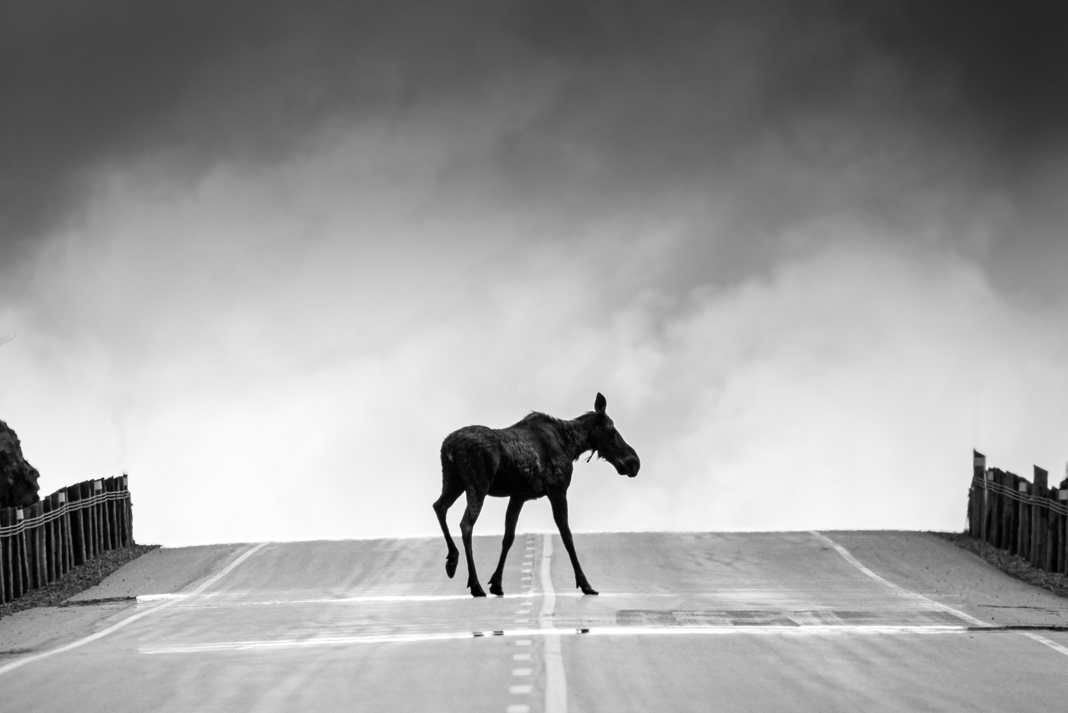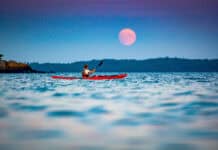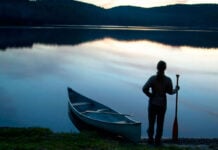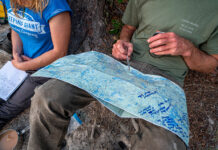April 22, 2020, was an Earth Day like no other. Usually congested highways were empty. At least half the airplanes in the world were grounded and passenger traffic was down by 95 percent. Greenhouse gas emissions plunged by 17 percent worldwide. And all around the globe, wildlife was being spotted where there was no wildlife before. Just a couple of months prior, no one could have predicted this new reality for Earth Day’s 50th anniversary.
While close to half of the planet’s human population was locked down due to COVID-19, the Earth was getting a breather. Social media showed nature flourishing on urban doorsteps: A coyote running down an empty main street in Chicago. A fresh-faced Los Angeles devoid of its haze of smog. The canals of Venice clear and fish visible. And residents in Punjab, India, were able to see the Himalayas, 120 miles distant, for the first time in decades. While the human tragedy of COVID-19 unfolded in our homes and hospitals, many remarked non-human animals were the beneficiaries of stay-at-home orders.
Enter the #natureishealing meme. It started in earnest, accompanying photos of blue-sky cities and unlikely animal crossings. It quickly turned to satire. The hashtag was soon accompanying images of animals “returning” to urban habitats, as though they were natural ones—raccoons wandering in a library, house cats riding city buses, a horse on an 8×10-foot city balcony, and a flock of sheep congregating outside an abandoned McDonalds.
The #natureishealing hashtag was an utterly absurd bit of humor breaking up my doomscrolling. Yet, in my urban backyard, I saw a family of foxes for the first time. The neighborhood was thick with wild bunnies. The stars seemed brighter. The city skyline clearer. Was there truth to the hashtag?

The Nature Conservatory of Canada (NCC) contends the COVID-19 lockdown had a positive impact on non-human species. “Life has been quieter for us. We haven’t been on the move as much and suddenly these species—they woke up,” said the NCC’s media director Andrew Holland in a recent radio interview. He cited reports of everything from moose to bears making appearances in populated areas.
“The major inhibitor of the movement of animals across the city is traffic—busy roads. And now we’ve seen major roads, major arteries in the city, almost devoid of cars,” says Marc Cadotte, a biology professor at the University of Toronto.
Pinned down, many turned to their local landscapes with fresh and hungry eyes. With travel and group activities restricted, and cooped up homeschooling and working from home, people have explored local green and blue spaces like never before.
As lockdowns lifted, paddlesports retailers and manufacturers reported banner sales years. Canoes, kayaks and SUPs are flying off the shelves at double or triple the usual volume. There’s rumor of a North American shortage as retailers sell out. And maybe this shouldn’t surprise us—paddling is the ideal social distancing activity. Even in a 16-foot Prospector, two paddlers sit more than the recommended six feet apart.
Of course, as we creep back to a new normal, unlikely sights have decreased. Wildlife shrinks back into the shadows, and pollution returns. According to the International Energy Agency, reduced activity due to the pandemic will likely cause an overall seven percent decrease in global emissions in 2020. Huge, but temporary. “Gains are short-lived,” says climate journalist and best-selling author David Wallace-Wells in a recent interview with Penguin Books. Meanwhile, the pandemic’s terrible consequences remain.
For environmentalists, the pandemic might provide lessons on how to adapt to another urgent, existential issue: climate change. As I write this in late June, there is a heatwave in Siberia with temperatures more than 100°F—the highest on record above the Arctic Circle. There’s nothing partisan about saying this event is deeply concerning. Our planet needs its wild places. Biodiversity equals stability.
The quick adaption to dramatically different habits and ways of living by some of the global community during COVID-19 offers hope, however.
“There’s been a radical change in the way we’ve been living, more than most of us thought possible months ago. The opportunity to transform has been revealed to us. The question is now what we do with that opportunity,” says Wallace-Wells.
Nature is not “healing”—it takes more than two months to clean the air and clear the water. But the pandemic highlights that change once unthinkable is possible—for climate, creatures and canoeists.
Kaydi Pyette is the editor of Paddling Mag. Send climate change denials to editor@paddlingmag.com.
This article was first published inPaddling MagazineIssue 62. Subscribe toPaddling Magazine’s print and digital editions here , or browse the archives here.
With so many humans staying at home to avoid coronavirus in March and April, the air was cleaner, water clearer and animals bolder. | Photo: Follow Me North Photography








